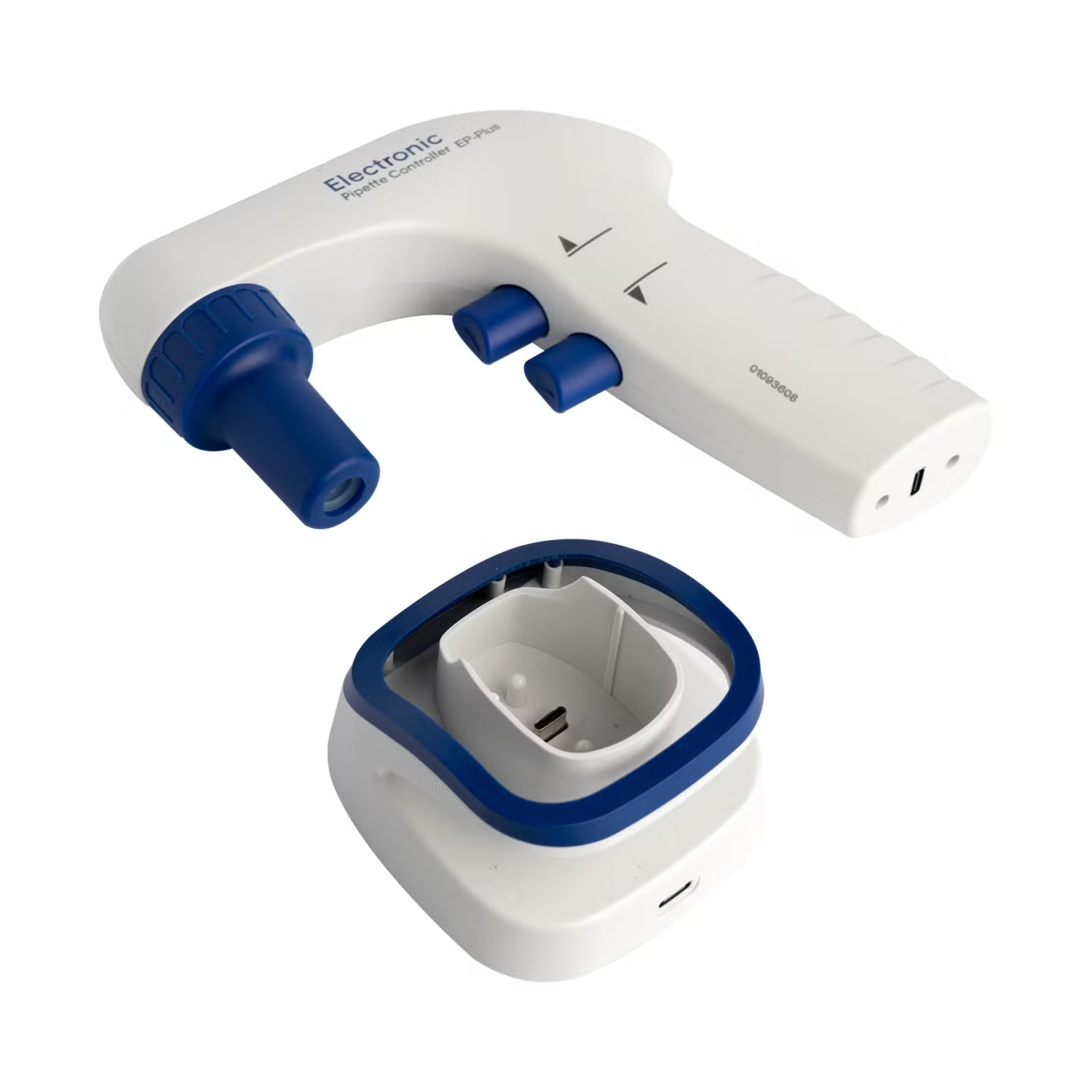Handling liquids in a lab shouldn’t feel like running an obstacle course. Yet, many scientists struggle with outdated tools that slow them down and lead to errors. Repetitive hand motions also leave researchers dealing with strain and fatigue after hours of work.
Here’s the good news: advanced motorized pipette controllers are improving efficiency. These tools provide speed, accuracy, and comfort all in one device. In this blog, you’ll learn how they work, their key advantages, and why every modern lab should consider them.
Ready to improve your workflow? Keep reading!
Key Features of Advanced Motorized Pipette Controllers
These motorized pipette controllers pack precision with ease, taking liquid handling to a whole new level. Their thoughtful design keeps user comfort and workflow efficiency front and center.
Adjustable motorized speed control
Adjustable motorized speed control simplifies liquid handling by allowing users to set the dispensing rate accurately. Faster speeds are ideal for high-volume transfers, while slower settings handle delicate or viscous samples gently.
This feature minimizes errors and prevents liquid splash, protecting sample quality.
Operators can transition between speed modes easily, saving time during intricate tasks. Such flexibility improves efficiency in labs managing diverse workflows. Let’s examine how ergonomic design further enhances user comfort and effectiveness.
Ergonomic design for reduced hand strain
Comfortable tools maintain high productivity in laboratories. Motorized pipette controllers with well-thought-out designs ease strain from repetitive tasks. Their lightweight structure sits comfortably in the hand, reducing fatigue during prolonged use.
Soft-grip materials and strategically positioned buttons enhance ease of operation. Operators remain efficient while maintaining comfort.
The right tool can mean the difference between precision and discomfort.
Investing in thoughtfully-designed laboratory equipment helps shield employees from potential issues like carpal tunnel syndrome. These features are essential for those managing delicate liquid transfer processes regularly.
Compatibility with various pipette types
A well-thought-out design is useless if the device doesn’t fit your tools. Advanced motorized pipette controllers adjust to most standard laboratory pipettes, handling single-channel, multichannel, or serological types with ease.
This flexibility simplifies workflows and removes compatibility concerns for business owners managing diverse lab equipment.
Changing between different pipettes takes seconds, allowing smooth transitions during liquid handling tasks. These versatile controls save time and reduce hassle in fast-paced environments like pharmaceutical labs or chemical research facilities.
Advantages of Using Motorized Pipette Controllers
Motorized pipette controllers simplify accurate liquid transfers, saving time during intricate tasks. They also reduce physical strain, making daily lab work less demanding.
Increased precision and accuracy in liquid handling
Errors in liquid handling can cost time and resources. Modern motorized pipette controllers enhance accuracy by reducing manual inconsistencies. Their precise motors dispense liquids with exact volumes every time, preventing mistakes that could compromise results.
Precision is the backbone of reliable research.
Effortless electronic adjustments minimize sample loss and contamination risks. This tool ensures consistent outcomes whether transferring microliters or milliliters.
Enhanced workflow efficiency in high-throughput applications
Motorized pipette controllers accelerate liquid handling in high-throughput labs. They reduce transfer time, allowing faster processing of hundreds or thousands of samples daily. Automated dispensing ensures consistent results without manual fatigue slowing the process.
Multichannel motorized options handle multiple wells at once, increasing lab productivity. Precision controls eliminate waste during chemical handling and sample preparation. This improved efficiency helps organizations meet tight deadlines while maintaining accuracy and repeatability in their workflows.
Reduction in repetitive strain injuries
Advanced pipette controllers significantly reduce the risk of repetitive strain injuries. Traditional pipetting involves constant thumb or hand pressure, which places strain on muscles and joints over time.
Labor-intensive workflows, like ELISA or high-throughput screening, often increase this issue.
Ergonomic designs in motorized models reduce physical effort. Features such as lightweight builds and soft-grip handles lessen fatigue during long hours. Adjustable speed controls further decrease unnecessary tension, offering precise handling with less strain on hands.
Applications in Modern Laboratories
Modern laboratories rely on motorized pipette controllers to manage intricate tasks with speed and precision—let’s examine how they simplify workflows.
ELISA and PCR workflows
ELISA and PCR workflows require precision in liquid handling. Minor errors can escalate into significant data inconsistencies. Motorized pipette controllers minimize risks by providing accuracy with each sample transfer.
Achieving consistent results becomes more manageable, even during tasks with high throughput.
Pipette automation accelerates these workflows considerably. Repetitive tasks such as dispensing reagents or transferring samples become quicker and less labor-intensive. This allows staff to concentrate on analysis rather than repetitive strain-inducing activities.
These tools also improve reproducibility, essential for assays like PCR screenings or ELISA tests aiming for dependable outcomes.
High-throughput screening
High-throughput screening demands precision and speed. Motorized pipette controllers simplify liquid handling in these processes. They allow faster transfers without sacrificing accuracy, crucial for testing hundreds or thousands of samples daily.
Their compatibility with multichannel pipettes speeds up repetitive tasks like sample dispensing. This reduces manual effort significantly while improving consistency across tests.
Efficient tools like these improve workflows for ELISA or PCR applications smoothly, preparing for nucleic acid and protein extraction tasks ahead.
Nucleic acid and protein extraction
Effective liquid handling tools make nucleic acid and protein extraction more straightforward. Motorized pipette controllers enable precise sample transfer, reducing contamination risk during essential procedures like RNA isolation or protein purification.
Accurate dispensing is critical for subsequent applications like PCR or Western blotting.
Motorized pipettes save time in high-throughput workflows by simplifying repetitive tasks. Their ergonomic designs decrease fatigue, making them suitable for lengthy extractions. Compatibility with various pipette types ensures adaptability across protocols and laboratory requirements.
Innovations in Motorized Pipette Technology
Design advancements now make pipetting faster and smoother. These tools adapt to complex tasks without breaking a sweat.
Motorized tip spacing for multichannel pipettes
Motorized tip spacing allows multichannel pipettes to adapt to different labware sizes. Scientists can transition between plates, tubes, and racks without manual adjustments. This feature saves time reconfiguring setups during sample transfers.
Labs conducting high-volume screening see significant advantages from this function. Automated adjustments enhance workflow efficiency while ensuring accuracy in liquid handling tasks.
Integration with automated liquid handling systems
Automated liquid handling systems work well with motorized pipette controllers. These controllers assist labs in managing large sample volumes while ensuring accuracy and repeatability.
By synchronizing the two systems, technicians reduce manual steps and accelerate workflows in high-throughput tasks like chemical research or precision pipetting. Automation reduces human error, saving time and lowering costs.
Pipette automation also enhances lab productivity by standardizing liquid dispensing across multiple experiments. For example, integrating electronic pipettes enables smooth transitions between different protocols without recalibration difficulties.
Labs can manage diverse applications such as ELISA or nucleic acid extractions effectively when paired with automated platforms. This combination keeps processes efficient and consistent across routine tasks.
Conclusion
Advanced motorized pipette controllers simplify lab work. They save time, ease strain, and improve accuracy. These tools fit perfectly into modern workflows. Investing in them increases productivity and reduces errors.
Small changes like this can make a big difference in daily tasks.





























